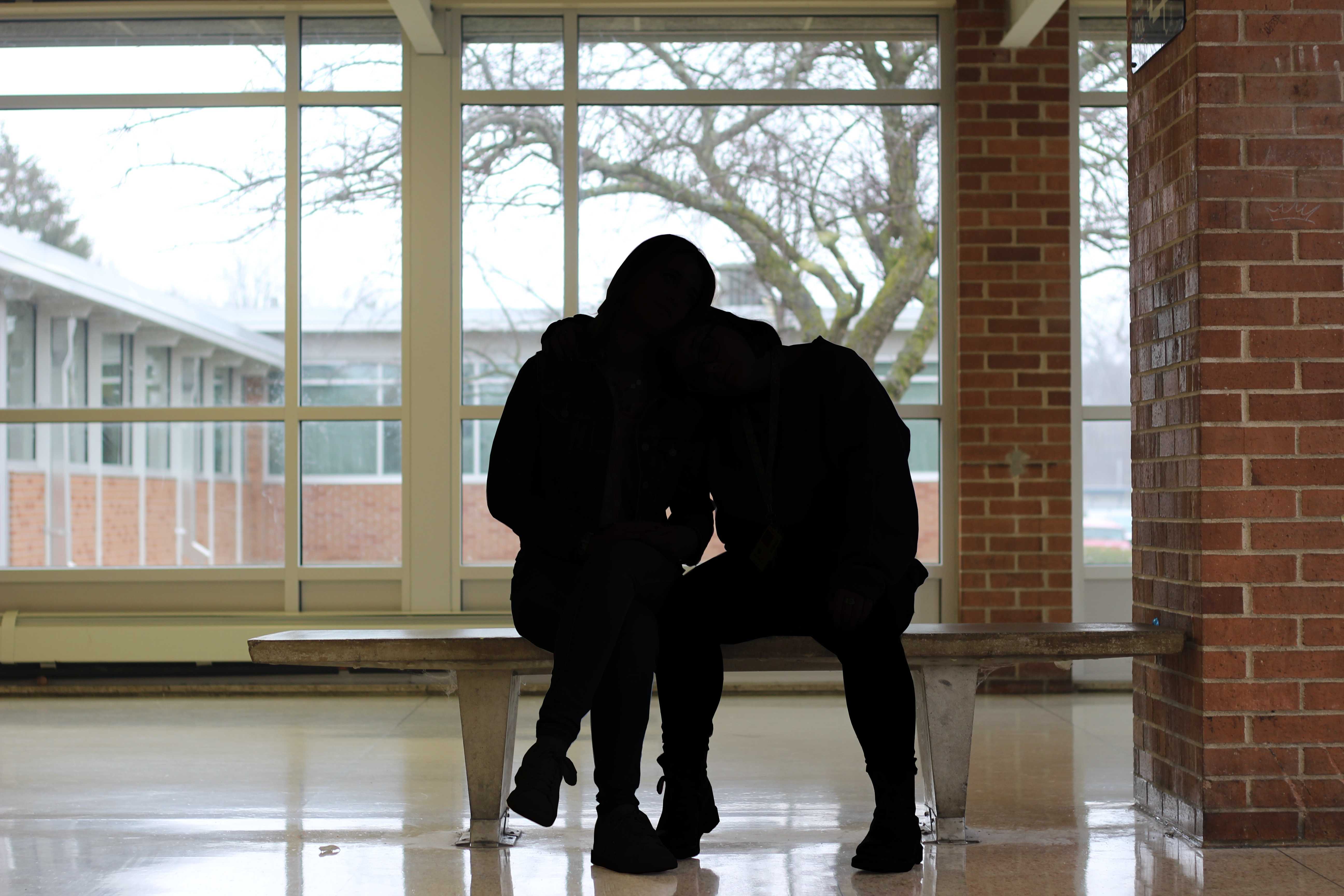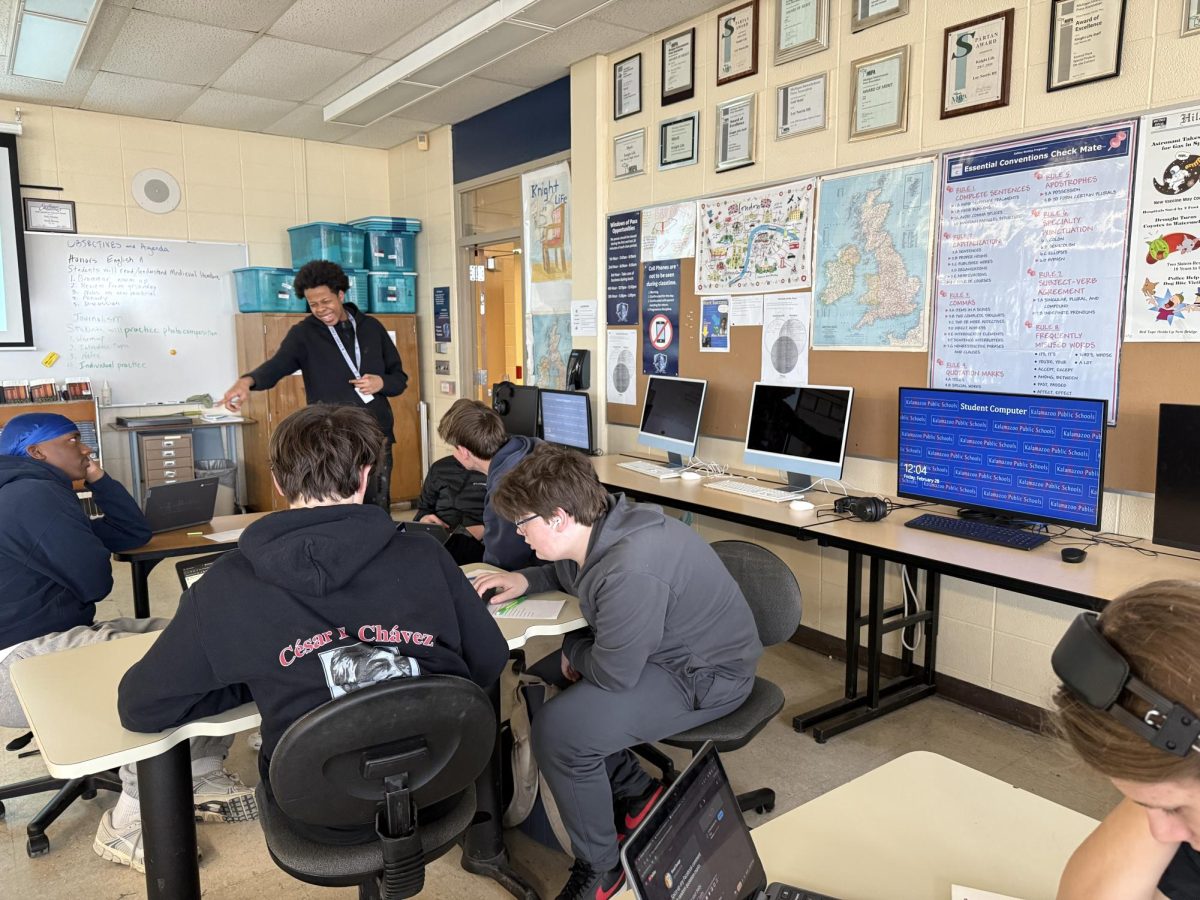
Imagine having an illness that many people don’t believe in, or choose to ignore. David Harn, a freshman at Loy Norrix, suffers from depression and anxiety.
“I have had panic attacks before, multiple this year,” Harn said nonchalantly.
One in five teens suffers from a mental illness, one in ten young people experience a period of major depression, and one in twenty-five Americans has lived with a serious mental illness such as major depression, schizophrenia or bipolar disorder, according to the National Alliance on Mental Illness. Mental illnesses are nothing new, and neither is how we treat those affected by them, particularly in schools.
The American Public School system is designed as a one-size-fits-all model, and students suffering with mental illnesses often slip through the cracks. Teachers see up to a hundred and fifty students a day in over crowded and often rowdy classrooms. Students often don’t get the help or support they need from the system, teachers and peers. There are things that both the staff and student body could be doing to help these students get the support and care they need, and this can start through communication and awareness.
The stigma surrounding mental illness is one that is embedded deep in our culture. However, opening the door and letting someone know it’s okay to talk to them or letting that person talk to you can make all the difference. Many teachers seem unapproachable and distant.
“I feel like my peers do, but not my teachers,” Harn said, on whether or not he feels teachers and peers make an effort to help and talk about mental health. “I have Mr. Wagner and Ms. Layton [they] seem to help, I like their classes and can talk to them.”
Although many teachers project an image of support, some do not. Often teachers and administrators can be insensitive or ignorant to an individual student’s mental health problems in an overcrowded class of thirty rowdy students. If teachers can start a dialogue, it can open the door for students to come and seek help, as well as allow their teachers to understand that the reason a student may be doing poorly is because they are struggling, not with the school work, but with their own personal issues.
While there are options for students struggling with a medical condition, such as 504 plans, these can sometimes be hard to get. A 504 plan sets guidelines for that student’s needs and allows for a personalized education that enables them to learn the best even with their disability. To obtain a 504 plan, students must have a chronic illness or impairment, and have it on record. Students can have difficulty seeking help for mental health issues, whether at home or at school, and many go undiagnosed and untreated. If teachers can communicate with students and let them know their options, many students might be able to get the help they need.
The student body can also help their peers suffering from mental illness. With peer pressure to fit in and be normal, students with mental illnesses can feel ostracized by their peers. Students have the power to change the social atmosphere in the school to one of acceptance and support. It can start with just the way someone treats their friends. This can then transfer to strangers and acquaintances.
“I try not to treat them differently because I feel like that alienates them. I try to just be supportive and be there for them because I know they’re going through a struggle,” Lilly MacInnis, a fellow freshman responded as to how she treats her friends that have mental illnesses.
A teacher’s opportunity to directly interact with the student body puts them in a unique position to supply help. Besides just starting a dialogue, teachers can also look for signs of mental illness in students that may be struggling in school. Teachers can try to set aside a one on one meeting with struggling students, just five minutes or so, to discuss what might be causing a lack of effort or ambition. This time could be used to educate a student about ways to get help from the school system, or how to get a 504 plan. There are many signs that someone is suffering from mental illness.
As to his personal experiences, Harne said, “Not being social, rubbing their arms, wearing overprotective clothes in non appropriate weather,” are all examples of behaviors of someone experiencing a depressive episode. Other signs include fidgeting, inability to pay attention changes in sleep or appetite, a drop in functioning and apathy, according to the American Psychiatric Association. Even if someone is displaying these behaviors and you’re still not sure whether or not they suffer from a mental illness, it’s always a good idea to talk with them to verify and let them know that there are people who care and that they can come to for help.
Peers can also take initiative and try to identify and help fellow students struggling with mental illness. Other students and friends are generally more trusted than teachers. When trying to reach out for help, a student is probably more likely to go to a friend or a peer. There are many ways friends and fellow students can help someone.
“Not telling them to go die, or to go kill themselves. Not saying that they don’t have a mental health problem and saying they are doing it for attention,” said Harn of things he believes other students could abide by to make everyone’s lives a little easier, especially those struggling with mental illnesses.
Once identified, there are several things teachers, administrators and peers can do to help a student. Sometimes just the acceptance of late work, even with some points docked, can be all the help needed.
As to ways a teacher or administrator could help students with mental illnesses Harn said “Having a way to tell a teacher you need time without saying I’m about to kill myself teacher, like a code word.”
Another additional service administrators could supply is having a certain number of mental health days you can take without it hurting your attendance. Taking a day just to have your mind recuperate and get better can be a massive help for students. If a student has a 504 plan, they may be able to add in excused absences for mental health days. Fellow students can also help their classmates. MacInnis, who does not suffer from a mental illness, frequently acts as a shoulder for her friends with mental illnesses.
MacInnis said,“I’m supportive by letting them talk to me, giving hugs, being like, you’re my friend, I love you, friendship, being whatever they need.”
There are also some changes schools could make to allow students to get the help they need. Teachers, who are in a prime spot to help a student, are overrun, seeing up to a hundred and fifty students a day. The school board could cut down on the number of kids per class, allowing students to get more individual attention, or the state lawmakers pass legislation cutting down on the allowed number of students in a class.
Overall, students need more communication and one on one attention from teachers and more programs besides a 504 plan geared towards those with mental illness to help them succeed. The current school system does not take into account the many mental illnesses that affect hordes of students. The curriculum that piles on the stress and is administered by teachers, who often want to help students but are unable to due to large class sizes and a set curriculum that leaves little wiggle room. Taking the time to talk and communicate about mental illnesses can help those that need help get help.
Categories:
Mental Illness in School & the Unheard Pleas for Help
March 20, 2018
0
More to Discover







